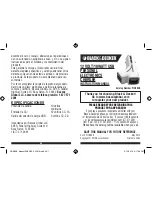
6
274
Driver Assistance Systems
Active Blind Spot Assist -
ABSA ( , with ACC only)
ABSA system represents an addition
to the BSA previously described (see
chapter "Blind Spot Assist - BSA" of
this section).
ABSA adds to the BSA the possibility in
certain circumstances to avoid and or
mitigate side collisions with vehicles
proceeding in the adjacent lanes by
changing the car trajectory in order
to try to keep it inside the detected/
estimated lane. A steering wheel
vibration is used as further feedback to
warn the driver that the lane change is
not safe.
The main logic core is the front radar,
whereas the sense inputs are the
radars on the rear bumper fascia
used for sensing the presence of
vehicle in the blind spot areas and
the forward facing camera placed
behind the internal rear-view mirror
that instead is used for lane detection
and estimation.
ABSA is designed to avoid and/or
mitigate a collision. Torque and
vibration application is however
available in the 60 - 180 km/h (37 - 112
mph) speed interval. All the speed
thresholds related to the BSA remain
still valid, since ABSA as mentioned is
BSA extension.
ABSA is intended as a “hands-on”
function meaning that the driver
is required to stay engaged in the
driving all the time with his/her hands
on the steering wheel, in case hands
are not on the steering wheel for a
certain time there cannot be any
steering torque application vibration
included (see "System Monitoring on
TFT Display" in this chapter).
System Availability
ABSA is designed for an attentive
driver therefore the system is available
only when his/her hands are on the
steering wheel or with hands off for a
very limited amount of time. When the
system is enabled, it will trigger cluster
warning in case at least one hand is
not detected on the steering wheel.
The torque application as well as the
vibration are suppressed/inhibited
in case of: high driver torque in
the steering wheel, high lateral
acceleration, trailer connected to the
proper control module, hands not on
the steering wheel detected for more
than a certain time.
Highly dynamic behaviours, driving
on the lane boundary, off course will
prevent the function from working.
FCW braking and stability system
interventions (ESC, ABS) will also
prevent the system from operating.
Changing lane results in system
inhibition for a certain time.
In addition the road must respect
some characteristics such as minimum-
maximum width, lane clearly defined
by two lane boundaries and only in
limited case for a limited time at least
one.
Each steering of the ABSA system is
always notified to the driver with
acoustic and visual feedback and each
signaling has the same duration as the
steering intervention, with a minimum
of 1 seconds.
Multiple steering interventions are
only allowed if both line lines are
available for the system.
Multiple interventions are allowed
both in terms of visual and acoustic
signals and in terms of steering torque.
If more then three consecutive
interventions are required within a
period of 180 seconds, starting from
the second intervention the acoustic
signal will last 10 seconds longer the
previous one.
Starting from the third acoustic signal
the system will emit a continuous
Summary of Contents for Ghibli 2021
Page 2: ......
Page 3: ...Levante Owner s Manual ...
Page 6: ...4 ...
Page 12: ...10 Introduction ...
Page 67: ...2 65 Understanding the Vehicle Air Conditioning Distribution A C Dual zone ...
Page 68: ...2 66 Understanding the Vehicle A C Four zone ...
Page 98: ...96 Before Starting ...
Page 200: ...5 198 Starting and Driving SPORT ...
Page 319: ...7 317 In an Emergency NOTE Maximum work angle of towing cable or bar 15 ...
Page 320: ...318 In an Emergency ...
Page 372: ...370 Maintenance and Care ...
Page 381: ......
















































